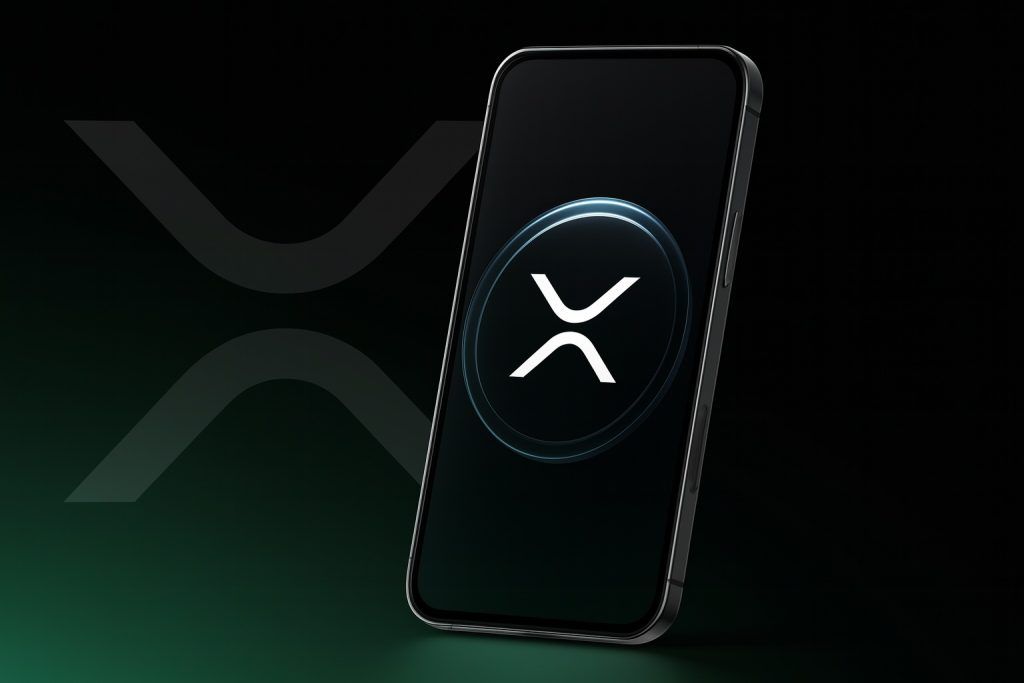- Flatlining After a Peak: Amazon’s stock is trading around $213 per share – about 12% below its 2025 peak (~$242 in February) and roughly flat on the year, significantly trailing the broader market’s double-digit gains [1].
- Insider Sale Hardly Dents Shares: Philanthropist MacKenzie Scott (Jeff Bezos’s ex-wife) sold ~58 million Amazon shares (worth ~$12.6 billion) over the past year, cutting her stake by ~42%. The stock dipped only ~2% on the news, as investors saw the sale as driven by charity, not a negative signal on Amazon [2].
- Regulatory Cloud Lifts: Amazon paid $2.5 billion to settle an FTC case over allegedly deceptive Prime sign-ups, removing a legal overhang. Investors welcomed the Sept. 30 settlement for “removing uncertainty,” and Amazon’s stock barely budged on the news [3].
- Wall Street Stays Bullish:45 out of 46 analysts covering Amazon rate it a “Buy,” with an average 12-month price target ~$264 (≈20% above current levels). Goldman Sachs even raised its target to $275 and called Amazon a top pick, citing underappreciated strength in its cloud business [4].
- Big Quarter Ahead: Amazon reports Q3 earnings on Oct. 30, and consensus calls for ~11–13% sales growth [5]. Analysts also predict a robust holiday quarter, with mid-teens revenue gains fueled by e-commerce, AWS cloud and advertising [6].
- Investing for Growth: The company is hiring 250,000 seasonal workers (U.S.) for the holidays and pouring money into AI, cloud and logistics – part of $100 billion+ in annual capital investments [7]. At the same time, Amazon is trimming corporate roles and faces rising competition in cloud (from Microsoft and Google) and retail (from Walmart), which could pressure margins near-term [8] [9].
- Antitrust Wildcard: A major FTC antitrust lawsuit (filed in 2023) accusing Amazon of monopolistic practices remains pending. While any outcome is far off, it poses a longer-term risk that regulators could seek drastic remedies down the line [10].
Stock Performance & Recent Moves
Amazon’s headquarters in Seattle. The company’s stock has traded range-bound in 2025 as investors weigh its growth prospects against market headwinds.
Amazon’s share price has been range-bound in recent months, entering this week in the low $210s. It closed at about $213 last Friday, stabilizing after a choppy early autumn [11]. The stock has recovered from a late-September dip, but remains well below its all-time high of ~$242 set in February. A summer tech selloff saw Amazon give back ~10% from that peak amid profit-taking and market volatility [12]. Year-to-date, AMZN is up only ~3%, a far cry from the 20%+ gains of the Nasdaq index – meaning Amazon has lagged its mega-cap peers in 2025 [13]. Investors have largely adopted a “wait-and-see” stance despite Amazon’s solid financial results, leaving the stock stuck in a holding pattern.
On a technical basis, Amazon’s shares are roughly in the middle of their 52-week range (~$162 to $242) and have been hovering just above key support levels [14]. Notably, the stock remains above its 200-day moving average (~$211), suggesting the recent downtrend may have bottomed out [15]. With a beta around 1.3, AMZN has been a bit more volatile than the overall market [16] – evident in its sharp swings this year. Overall, market sentiment on Amazon has been cautious but cautiously optimistic: investors recognize the company’s strong fundamentals, yet are waiting for a catalyst (like an earnings beat or re-accelerating growth) to drive the next breakout [17].
Recent Developments Driving the Stock
Insider Selling: One of the most eye-catching recent developments was a massive insider stock sale – but it barely moved the needle on AMZN’s price. Billionaire MacKenzie Scott (ex-wife of founder Jeff Bezos) revealed in an Oct. 14 filing that she sold roughly 58 million Amazon shares over the past year, trimming her stake by about 42% [18]. That stake was worth an estimated $12.6 billion at current prices. Despite the size of the sale (one of the largest insider divestitures in Amazon’s history), the market reaction was muted: Amazon’s stock slid only ~2% on Oct. 15 when the news hit [19] [20]. Traders viewed the dip as a short-lived reaction – Scott’s move is widely seen as funding her philanthropy, rather than any lack of confidence in Amazon’s business [21]. (Scott has donated over $19 billion since 2019.) Even Jeff Bezos has been gradually selling shares (his ownership recently fell below 10%), yet these sales too have been absorbed without much fuss [22]. The takeaway: insider selling, in this case, did not signal any fundamental issue at Amazon, and investors largely shrugged it off.
Regulatory Relief: Another major headline was Amazon’s decision to settle a high-profile FTC lawsuit over its Prime subscription practices. On Sept. 30, in the midst of trial, Amazon agreed to pay $2.5 billion to resolve allegations that it had used deceptive “dark patterns” to enroll users in Prime and hinder cancellations [23]. The deal includes $1.5 billion in customer refunds and a $1 billion fine [24], though Amazon admitted no wrongdoing and will implement simpler cancellation tools going forward [25]. Crucially, this settlement lifted a cloud of uncertainty that had been hanging over the stock. Investors welcomed the resolution – essentially a one-time payout to put the issue to bed – as a smart move ahead of the busy holiday season. “It clears a cloud of uncertainty… by writing a one-time check, CEO Andy Jassy removed a potential long distraction,” one analyst observed, noting the relief rally in Amazon’s shares on the news [26]. In other words, by ponying up a relatively small sum (for context, $2.5 B is about what Amazon generates in 33 hours of revenue [27]), the company avoided a protracted legal battle that could have weighed on sentiment. This proactive approach “cleared the decks” for Amazon to focus on growth rather than courtrooms [28], heading into the crucial holiday quarter.
Product & Workforce Initiatives: In the same timeframe, Amazon has been doubling down on its growth investments. The company held a product event unveiling new AI-powered Alexa features – an “Alexa+” generative AI upgrade aiming to make its voice assistant smarter and, eventually, more monetizable [29]. This move shows Amazon’s push into generative AI, an area where rivals like Google and Apple are also active [30]. Amazon also announced it will spend over $1 billion on pay raises and benefits for U.S. warehouse and transportation workers [31], an effort to boost retention amid ongoing labor pressures and unionization efforts. On the international front, Amazon is investing heavily in its cloud infrastructure – committing €1 billion in Belgium by 2027 to expand AWS data centers and logistics in Europe [32]. And despite belt-tightening in some corporate areas, Amazon is hiring 250,000 seasonal workers in the U.S. for the holidays (for a third year in a row) [33]. These temp roles, at ~$20/hour wages, reflect management’s confidence that demand will surge in Q4. In fact, Amazon appears to be bracing for record holiday e-commerce volumes even as broader consumer spending shows signs of cooling [34]. All told, these developments show Amazon shoring up its tech and fulfillment muscle ahead of its busiest season – even as it balances cost cuts elsewhere. (Notably, reports say Amazon is planning another round of corporate layoffs, trimming up to 15% of its HR staff as it streamlines operations and doubles down on AI investments [35]. This underscores CEO Andy Jassy’s focus on efficiency, coming after 27,000 job cuts last year to “right-size” the company’s expense base [36].)
Wall Street Sentiment and Forecasts
If Amazon’s lackluster stock performance doesn’t reflect its business trajectory, Wall Street certainly has noticed. Analysts remain emphatically bullish on Amazon. “Fundamentally, the stock remains sound,” one tech fund CEO told TechStock², explaining that many big investors have been buying any dips in AMZN shares [37] [38]. In fact, 45 of 46 analysts covering the company rate it a Buy, and the consensus 12-month price target is around $265 [39]. That target implies healthy upside (~20%) from current levels. Numerous analysts have hiked their targets in recent months following Amazon’s strong results. For example, Goldman Sachs bumped its target from $240 to $275 and named Amazon a “top pick” after seeing strength in the cloud and advertising businesses [40]. Bank of America likewise reiterated Amazon as its “top Large Cap pick” in e-commerce, citing projected market share gains (especially in grocery), “margin expansion from robotics,” the ability to leverage the huge Prime user base in AI, and expected AWS acceleration as it adds cloud capacity next year [41]. In short, the Street’s message is clear: Buy on weakness.
The optimism is grounded in Amazon’s financial momentum. The company has strung together two straight quarters of double-digit revenue growth after a pandemic-era slowdown. In Q2 2025, Amazon’s sales jumped +13% year-on-year to $167.7 billion, with broad strength across e-commerce and services [42]. Notably, its crucial cloud unit AWS saw growth reaccelerate to ~17% YoY (after dipping below 16% in prior quarters) [43], and its burgeoning advertising segment grew over 20%, hitting a ~$40 billion annual run-rate [44]. Cost cuts have supercharged profitability – Amazon’s net income was $18.2 B in Q2 (EPS $1.68), handily beating forecasts [45]. Operating margins climbed to ~13%, up from ~5% two years ago, thanks in part to efficiency moves and past layoffs [46]. This combination of re-accelerating growth and widening margins has reinforced the bull case and sets the stage for the upcoming earnings report.
All eyes are now on Amazon’s Q3 2025 earnings, due October 30. The company is forecast to post another quarter of solid growth – Wall Street expects ~11–13% revenue growth for Q3 [47], which would keep Amazon squarely in double-digit expansion mode. Key drivers likely remained familiar: steady e-commerce gains (bolstered by faster delivery and a successful October Prime Day event), continued AWS cloud strength, and a booming ads business as more sellers pay to promote on Amazon’s platform [48]. Analysts will also be laser-focused on Amazon’s profit margins this quarter, watching whether the company maintained its recent margin improvements in the face of wage hikes and big infrastructure investments [49]. Any upside surprise – say, faster AWS growth or higher margins – could prompt analysts to raise estimates yet again. Conversely, a miss on cloud or a hint of consumer softness might raise some eyebrows, though at this point sentiment remains upbeat [50]. As one research note highlighted, virtually all analysts covering Amazon have recently reiterated Buy ratings, citing the company’s resilient earnings and improved cost discipline [51]. In other words, the bar is set high, but confidence is too.
Looking beyond this quarter, Wall Street expects Amazon’s growth engine to keep humming. Consensus forecasts call for double-digit revenue growth into 2026 and sustained earnings per share increases in the mid-teens annually [52]. Some bulls even argue Amazon could become the next $3 trillion company in the coming years if it executes well on AI and cloud opportunities [53]. That lofty goal will depend on Amazon continuing to fire on all cylinders – and so far, analysts see more tailwinds than headwinds on that front.
Competitive and Regulatory Challenges
Despite the rosy outlook, Amazon faces challenges that could temper its trajectory. A looming concern is the ongoing antitrust scrutiny. In late 2023, the U.S. Federal Trade Commission (FTC) and 17 states filed a landmark antitrust lawsuit accusing Amazon of abusing monopoly power in online retail [54]. Regulators allege Amazon favors its own products on its marketplace and squeezes third-party sellers, among other charges [55]. The case could drag on for years, but its very existence underscores that Amazon’s sheer size and market dominance are under the microscope. In a worst-case scenario (still considered remote), remedies could include hefty fines or even a forced break-up of parts of Amazon’s empire [56]. For now, this is mostly a background risk – no immediate impact – but it’s a wildcard for investors to monitor as we head into 2026.
Competition is another constant pressure. In cloud computing, Amazon Web Services still leads, but rivals Microsoft and Google are expanding faster. Last quarter, Microsoft’s Azure grew revenue ~39% and Google Cloud ~32% year-on-year, versus ~17.5% for AWS [57]. While AWS remains the largest cloud provider, customers now have viable alternatives, especially as next-generation AI workloads become the battleground. Both Microsoft and Google are investing aggressively in AI capabilities to narrow the gap, which pressures Amazon to innovate to keep AWS growth on track [58]. Amazon has been responding – investing over $30 B per quarter in capital expenditures (on AI chips, data centers, etc.) to maintain its cloud edge [59] – but the competition is fiercer than ever.
In e-commerce, Amazon’s dominance is being tested at the margins. It still commands an estimated 38% of U.S. online retail sales, far ahead of any rival [60]. (Walmart, for comparison, has about 6–7% share online [61].) But Walmart is growing its e-commerce business rapidly and leveraging its vast store network and Walmart+ membership program to chip away at Amazon’s lead [62]. Meanwhile, upstart platforms like Temu (a low-cost shopping app) have lured millions of bargain-hunting consumers, showing that Amazon can’t take its position for granted [63]. To counter this, Amazon has expanded services like Buy with Prime (letting independent merchants use Amazon’s logistics) and doubled down on pricing and convenience. Still, the retail battlefield is getting crowded, and customer loyalty is hard-won.
These competitive and regulatory headwinds, combined with Amazon’s own ambitious spending, could weigh on results in the near term. Amazon is currently pouring resources into long-term bets – spending over $100 billion a year on things like one-day delivery logistics, AWS infrastructure, and content for Prime Video [64]. Such investments build moats for the future, but they also crimp free cash flow in the short run (Amazon’s trailing 12-month free cash flow is positive again but only ~$18 B, down sharply from $53 B a year ago [65]). Thus far, investors have accepted these trade-offs as long as the core businesses keep growing. But it’s a delicate balance. Any hint of a consumer spending slowdown or a slip in AWS’s growth trajectory could quickly revive concerns about Amazon’s valuation [66]. In essence, Amazon must execute on its growth plans even as it fends off rivals and regulators on multiple fronts – a challenge befitting a company of its scale.
Broader Market Context and Outlook
Amazon’s near-term stock direction will also hinge on the broader market mood. This week, several high-profile tech peers (from Tesla to Netflix) are reporting earnings, and key U.S. economic data (like inflation reports) are due, all of which could sway investor sentiment [67]. Tech stocks in general have been volatile, with indexes near record highs but showing signs of shakiness amid interest rate and geopolitical jitters [68]. If peer companies report strong results or inflation cools, it could lift the entire tech sector – boosting Amazon along with it. Conversely, any negative surprises could trigger a broader risk-off pullback that drags on AMZN in the short run [69]. In the run-up to Amazon’s own earnings, the stock may largely trade in line with the Nasdaq’s swings, barring any company-specific developments.
Looking at the crucial holiday season, Amazon appears cautiously optimistic. Consumer demand in 2025 has held up relatively well, but higher interest rates and economic uncertainties (trade tensions, etc.) are potential dampeners on spending [70]. Amazon’s hefty seasonal hiring suggests it is betting on solid holiday sales. Investors will be watching broader retail indicators – from U.S. retail sales reports to rival retailers’ forecasts – as a gauge of how Q4 might unfold [71]. Any signs that shoppers are pulling back could be a warning sign for Amazon, whereas upbeat retail data would affirm its bullish holiday prep.
Bottom line: Heading into late October, Amazon’s stock finds itself at a crossroads. Recent news has tilted positive – a big legal headache resolved, insider selling absorbed, and Wall Street singing praises of Amazon’s growth story [72]. The company’s fundamentals look strong: growth is reviving, margins are improving, and its competitive moats (from AWS to Prime) remain intact. Yet the true tests lie just ahead. The Q3 earnings report on Oct. 30 will need to confirm Amazon’s momentum, and the all-important holiday quarter will reveal how well Amazon can capitalize on its investments and fend off rivals [73]. In the meantime, the prevailing sentiment is that Amazon remains a cornerstone tech franchise with significant long-term upside [74]. As one tech fund CEO put it, “fundamentally, the stock remains sound,” and many institutions stand ready to buy the dips [75]. For investors, the key takeaway is that Amazon’s story is intact – and the next few weeks could determine whether AMZN finally breaks out of its 2025 holding pattern toward new highs, or continues to trade sideways awaiting a bigger catalyst [76] [77].
References
1. ts2.tech, 2. ts2.tech, 3. ts2.tech, 4. ts2.tech, 5. ts2.tech, 6. ts2.tech, 7. ts2.tech, 8. ts2.tech, 9. ts2.tech, 10. ts2.tech, 11. ts2.tech, 12. ts2.tech, 13. ts2.tech, 14. ts2.tech, 15. ts2.tech, 16. ts2.tech, 17. ts2.tech, 18. ts2.tech, 19. ts2.tech, 20. ts2.tech, 21. ts2.tech, 22. ts2.tech, 23. ts2.tech, 24. ts2.tech, 25. ts2.tech, 26. ts2.tech, 27. ts2.tech, 28. ts2.tech, 29. ts2.tech, 30. ts2.tech, 31. ts2.tech, 32. ts2.tech, 33. ts2.tech, 34. ts2.tech, 35. economictimes.indiatimes.com, 36. ts2.tech, 37. ts2.tech, 38. ts2.tech, 39. ts2.tech, 40. ts2.tech, 41. finviz.com, 42. ts2.tech, 43. ts2.tech, 44. ts2.tech, 45. ts2.tech, 46. ts2.tech, 47. ts2.tech, 48. ts2.tech, 49. ts2.tech, 50. ts2.tech, 51. ts2.tech, 52. ts2.tech, 53. ts2.tech, 54. ts2.tech, 55. ts2.tech, 56. ts2.tech, 57. ts2.tech, 58. ts2.tech, 59. ts2.tech, 60. ts2.tech, 61. ts2.tech, 62. ts2.tech, 63. ts2.tech, 64. ts2.tech, 65. ts2.tech, 66. ts2.tech, 67. ts2.tech, 68. ts2.tech, 69. ts2.tech, 70. ts2.tech, 71. ts2.tech, 72. ts2.tech, 73. ts2.tech, 74. ts2.tech, 75. ts2.tech, 76. ts2.tech, 77. ts2.tech







